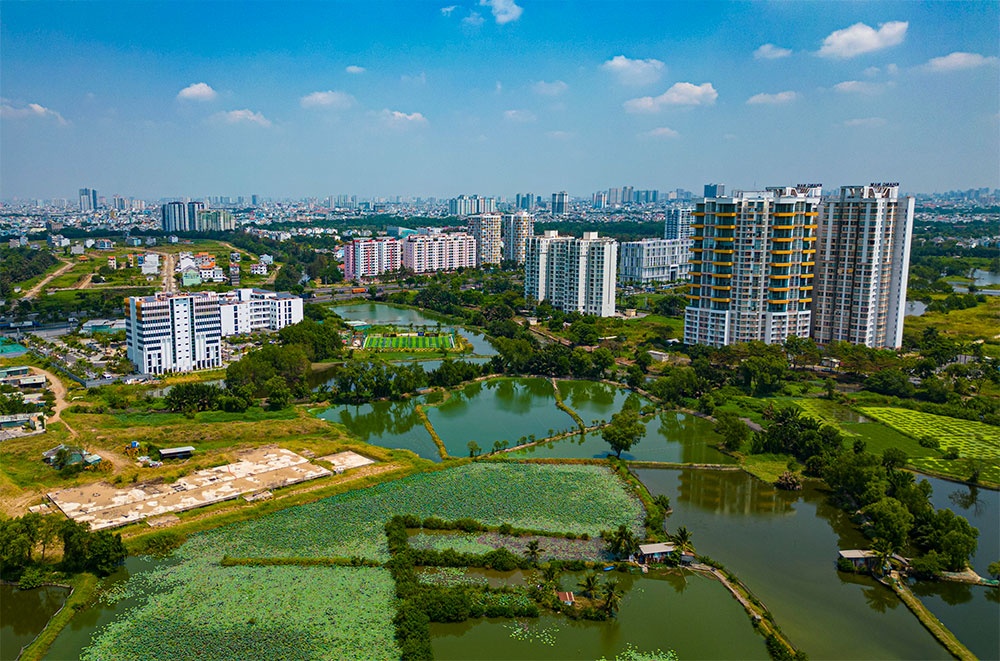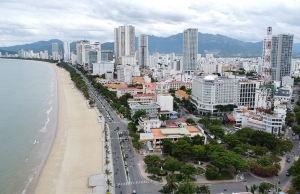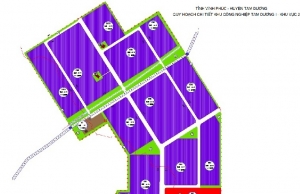New belief around the corner for real estate
 |
| Some new and delayed projects have found the capacity to get their ventures going, Photo: Le Toan |
A survey released in early 2023 carried out by batdongsan.com.vn showed that out of 1,000 Vietnamese people, up to 68 per cent intend to buy real estate within the next year and up to 87 per cent of those who already own three or more real estate still want to buy more.
The strong figures may stem from moves by the government to complete amendments to the 2013 Law on Land and other relevant laws before 2025, which involve adjustment to land price frameworks, determining land prices according to market principles, and land allocation and lease being carried out mainly through auctions.
In addition, a series of provincial plans have been recently approved by the prime minister, opening up opportunities for real estate investors.
“When interest rates start to cool down, real estate transactions will improve. Real estate is still a favourite investment channel because the real demand for both accommodation and ownership of Vietnamese people is great,” said Hoang Ha, an investor in Ho Chi Minh City who is looking for new real estate opportunities.
Many interested parties are also waiting for the acceleration of public investment disbursement by relevant authorities.
In particular, the launch of Ho Chi Minh City’s Ring Road 3 project is encouraging the real estate market. According to the municipal People’s Committee, the city is paying about $382 million for compensation in time to start the project on June 30. Ring Road 3 will be more than 76km long, passing through Ho Chi Minh City, Dong Nai, Binh Duong, and Long An.
In particular, the section through Ho Chi Minh City passes through the key areas of Thu Duc city, Cu Chi, Hoc Mon, and Binh Chanh district.
Southern regional director of batdongsan.com.vn Dinh Minh Tuan said that compared to Southeast Asian countries such as Singapore, Thailand, Malaysia, and Indonesia, the demand for real estate in Vietnam is at the highest level in the region.
“Vietnam has a large and young population with a high urbanisation rate while the supply is limited, so the real demand for housing always increases,” Tuan said.
Pham Lam, general director of DKRA Group, said that the most important issue today is to strengthen the confidence of buyers. At present, products are being offered but buyers remain hesitant.
“It is necessary to let customers access loans at low-interest rates and stimulate consumption,” Lam said, adding that although the current interest rates have decreased, they are still high compared to people’s income.
Duong Minh Tien, general director of real estate group Asia New Time, said that only when the worry of losing money is reduced, confidence is restored, and money from investors will automatically pour into real estate.
“To have the belief return, legal difficulties for projects must be wiped out. Next, developers must be serious about project development to build a track record. Bankers, meanwhile, also have to support by lending lower interest rates. All of those factors will help resume the market,” Tien said.
After a period of difficulty, the beginning or restart of a series of projects are offering hopeful signs for the market. Earlier in May, Bcons Construction Investment held a ceremony to kick off the Bcons Polaris project. Later this year, it will add a total of five new projects, of which Polaris is the first to be implemented, boasting over 520 apartments in Binh Duong New City.
Hung Thinh Group also said that after temporarily suspending construction activities due to difficulties in cash flow and legal procedures, it has reached an agreement with the bank on funding for projects to continue construction. This month, a series of projects in Ho Chi Minh City, Binh Duong, Dong Nai, and Binh Dinh will be restarted.
 | Lenders adjust as real estate giants revive ventures Some banks are strategically adapting lending practices and risk management approaches to address the complexities and risks associated with real estate-related credit, particularly for large-scale property developers. |
 | Industrial real estate picture contrasting from north to south While industrial real estate in the north is recording a strong increase in supply, rent, and occupancy rates, the south of the country is enduring reduced rental demand and legislation obstacles. |
What the stars mean:
★ Poor ★ ★ Promising ★★★ Good ★★★★ Very good ★★★★★ Exceptional
Related Contents
Latest News
More News
- JustCo expands business into Vietnam (December 22, 2025 | 17:58)
- Sun Group breaks ground on $2 billion Van Don casino complex (December 19, 2025 | 18:14)
- Rare, beautiful, sustainable: the mark of iconic real estate (December 19, 2025 | 08:00)
- Owner-occupied housing stabilises, paving the way for new growth cycle (December 18, 2025 | 17:04)
- Unlocking urban potential of smart cities (December 18, 2025 | 16:50)
- Green finance offers 'passport' for Vietnamese construction, building materials firms (December 15, 2025 | 08:00)
- Gamuda Land commit long-term investment (December 12, 2025 | 11:49)
- HITC ties up with Evolution to develop AI and hyperscale data centres in Vietnam (December 11, 2025 | 12:09)
- Real estate deals boom via high-profile names (December 08, 2025 | 11:32)
- Industrial segment shaped by M&As (December 08, 2025 | 08:00)

 Tag:
Tag:




















 Mobile Version
Mobile Version